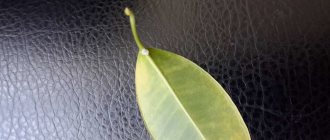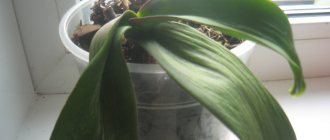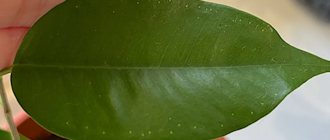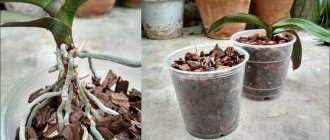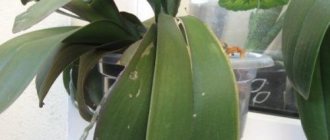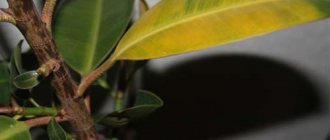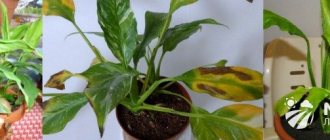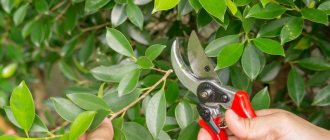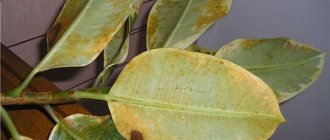Ficus pleases the eye until various troubles begin to happen to it. It often happens that the plant begins to wither, turn pale, and the leaf blades fall off. In order to understand why ficus leaves curl, you first need to remember whether there have been any changes in the care of the flower recently. If this happened, then by eliminating these nuances, it will be possible to restore a decent appearance to the plant.
Today there are a number of pests that attack indoor flowers. And although ficus is considered a fairly strong plant, sometimes the cause of the problem lies precisely in this.
How pests affect ficus
Having corrected all the errors in care that occurred, we can assume that the leaf plates are wrapped because pests have infested the flower.
The most common of them are:
- mealybug;
- spider mite;
- thrips;
- aphid;
- scale insects;
- nematodes.
By examining them separately, it will be possible to determine for sure why the leaves began to curl.
Infographics: reasons for curling ficus leaves and options for eliminating the problem
Mealybug
It is almost impossible not to notice the mealybug, because it is revealed by a white coating on the leaf blades, reminiscent of cotton wool. A beetle “lives” inside the lumps and sucks out all the juices from the leaves. It is not surprising that they begin to curl up and wither.
To eliminate the problem, you need to rinse the plant under warm water. After this, you will need to treat the ficus with a soap solution. If after treatment the situation has not changed, then you should buy chemical compounds and treat with these drugs. These include Actellik or Confidor. How to carry out the manipulation is indicated in the instructions.
Spider mite
Spider mites are no less dangerous to plants than mealybugs. Small red spiders can weave webs around both the stem and leaf blades. The difficulty is that due to its small size, it is not always possible to notice the tick. Over time, the affected flower “shows” with its entire appearance that it is infested with pests.
The leaf blades curl up, then turn yellow and fall off. To correct the problem, rinse the plant with water and then spray it with garlic solution. This should help, since the tick does not tolerate moisture. Actually, it starts in dry and hot rooms. And this is one of the nuances of improper care. If the plant is severely affected, do not wait. You need to purchase one of the insecticides in the store and treat the ficus with it.
Thrips
Thrips are no less dangerous. With their appearance, the leaves will not always curl. Sometimes dark veins or spots appear on the plates, then the leaves turn yellow and then begin to fall off. You can eliminate the problem, and to do this you need to treat the flower with Tanrek or Actellik.
Aphid
For those who don’t know, it’s worth saying that an aphid is a small green or light yellow bug that reproduces very quickly. Sometimes aphids “come” into the house along with new plants that have not been quarantined. In this case, you shouldn’t be surprised where the parasite came from, since the gardener himself “brought” it into the house.
This pest is dangerous because it sucks the juices from the flower, stopping its growth. In addition, aphids are carriers of viral diseases, so there will be nothing strange in the fact that after the pest is detected, the flower becomes sick. To eliminate the problem, the flower is thoroughly washed and all damaged shoots are removed. It would be a good idea to spray the ficus with pyrethrum.
Shields
If you wonder why ficus leaves curl inward and what to do, you may suspect that the plant has been attacked by a scale insect. Brown small bugs often “settle” on the inside of the leaf, so it is not always possible to notice them in time.
Parasites suck the juice out of the plant, which affects the appearance of the flower. Not only is the scale insect harmful in itself, it also produces “honeydew”, which leads to the development of sooty fungus. In order to save the ficus, it is recommended to remove all pests from the flower, and for prevention, also treat the bush with a soap solution.
Nematodes
Nematodes can usually be identified by the flaccidity of the flower. The particular difficulty of this problem is that pests attack the root system. That is, they “settle” right on the roots. The secretions of these parasites are particularly toxic, and this, again, affects the appearance of the plant. The leaves of the ficus wither or curl, and the flower gradually dies. In order to recognize pests, you should remove the ficus from the pot and carefully examine the root system. You will notice small “beads” on it, which are nematodes. Insecticides are used to save the flower.
Important! Having noticed pests, it is necessary to immediately begin to combat them, otherwise it may be too late.
You need to understand that the parasite can easily spread to neighboring flowers.
Ficus treatment by watering and fertilizing
If the ficus leaves curl and the soil in the pot is dry, the reason is obviously a lack of watering. It is necessary to dry the substrate in the pot no more than 3-5 cm, focusing on the age and volume of the plant.
Oversaturation with moisture causes stagnation in the pot, as a result of which the roots of the ficus rot. The overall system of moisture flow and nutrition is disrupted, which is reflected in the condition of the leaves.
How to water a ficus: moderately + in small portions + in a tray + drying the soil.
Feeding ficus can either restore or kill it. For fertilizer, use the mineral complex only on roots that have been spilled with water. Concentrated mixtures of fertilizers applied to dry roots cause burns, partial death or total death of the roots.
Pests on ficus - identify and kill
Which of the following pests cause leaf curl? All parasites can cause the symptom that appears. For example, a mite feeds on leaf sap, drying out the plant. The parasite loves an overdried plant, finally finishing off the diseased ficus.
Dry indoors, overdried soil and sap-eating mites = curled ficus leaves.
Methods for treating parasites on ficus:
- Spraying with Pyrethrum.
- Treatment with Actellik.
- Wipe the leaves with soapy water.
- Elimination of the root cause that provoked the appearance.
Curling of the leaf plates of a ficus as a consequence of a flower disease
There are several diseases that can cause ficus leaves to curl inward. Depending on the extent of the problem, this may not be the case, but it is worth mentioning the diseases.
Some of the most common are:
- sooty fungus;
- cercospora;
- anthracnose;
- botrytis.
Sooty mushroom
Why sooty fungus appears was mentioned above. Its harbinger is often another pest. Another thing is that you need to know how to deal with it.
Considering that the disease can be recognized by the sticky coating on the leaves, it must be carefully removed with soap. To do this, you will need to soap the sponge well, and then wipe each leaf. If this is not done, the plant will begin to wither.
Cercospora
Cercospora blight is a fungal disease. Often the gardener himself is to blame for its occurrence, since it develops at high air humidity. The disease is indicated by black dots on the leaves. The solution to the problem is simple: you need to reduce watering of the ficus, remove the affected areas, and then spray the plant with an antifungal agent.
Anthracnose
Rusty spots on leaf plates are the main indicator of a problem. Of course, over time, the leaves may curl and fall off, but it is better not to let this happen. The problem must be solved by treating the flower with a Fungicide.
Botrytis
This disease is somewhat similar to the previous one, only in this case yellow-brownish spots with a dark edge appear on the leaves. Antifungal drugs can correct the situation.
Important! If there are doubts about a disease or pest that has infected the plant, then for prevention it would not be a bad idea to treat the ficus with an antifungal agent or insecticides.
Control and prevention measures
For physiological reasons, ficus leaf curling can occur when the tree reaches maturity. In this case, the damaged parts must be removed, and attention should be paid to high-quality fertilizers with an optimally selected composition. The problem is more often observed in hanging forms - they are more moisture-loving and do not tolerate dry air and direct sunlight.
The lower leaves can become deformed and fall off in tree-like forms for natural reasons. The trunk becomes bare in old plants, as well as due to transplantation into depleted soil, untimely change of pot and lack of fertilizers.
To avoid these problems, carry out timely prevention:
- spray the plant not only in the heat of summer, but also in winter;
- install a tray, filling it with wet pebbles or expanded clay;
- replant young plants annually, and adult plants once every 3 years;
- do not prune or replant the tree in winter and early spring;
- Periodically check the leaves for traces of pests and diseases.
Leaves that have already changed shape and curled can be removed only if they have dark spots, sticky coating and other traces of infection and the presence of pests. Do not trim healthy foliage - when temperature and other indicators normalize, it will return to its previous shape.
Other ficus problems
Sometimes the leaf curls with other problems that should be mentioned.
This:
- Sunburn. Once the flower stands at least a little under the scorching sun, the results are obvious. It is good if the sheet plates only curl and do not burn.
- Low temperature. If the room is very cold or the flower is in a draft, then it is not surprising that the leaves will begin to curl. It is very important to pay attention to the problem in time before the root system freezes.
- Lack of fertilizers. Sometimes, if there is a lack of nitrogen fertilizers, the shape of the leaf may change due to its curling inward. Feeding the ficus will eliminate this problem.
Foliage curling is not uncommon. The most important thing is to identify the factor that led to such consequences.
Reasons why ficus leaves curl and methods to get rid of this problem
Ficus leaves are the first to respond to changes occurring in plant tissues. Various diseases and attacks of insects, especially sap-sucking insects, are reflected in the appearance and structure of the foliage.
Ficus leaves often curl due to improper care, often non-compliance with temperature conditions and lack of lighting. Only by eliminating the root causes can the flower regain its former decorative crown and restore the volume of foliage.
Ficus benjamina: conditions for a flower to be green even in winter
This ficus is quite capricious. With slight changes in the conditions of its maintenance, it immediately sheds its leaves. Options for the development of events are as follows:
- Falling of leaves most often occurs when there is a temperature change, when there is a draft, or when the location of the pot changes. Sometimes, without any changes, the leaves of this ficus may simply fall off in the fall.
- Ficus leaves may become covered with brown spots. This indicates that the air is too hot or that the flower has been overfed with fertilizers. Direct sunlight can scorch the plant.
- Small leaves grow if the ficus does not have enough nutrients.
- If the leaves are deformed or the shoots of the ficus develop poorly, this indicates a lack of nitrogen fertilizers.
Adult Ficus Benjamin When caring for the Ficus Benjamin, you need to pay attention to its leaves. By the appearance of the leaves you can always tell if there is too little or too much watering, fertilizer, lack of sun, too cold or too hot. Then caring for him will not be difficult.
In addition, ficus leaves can curl and fly down when attacked by pests. Prevention and pest control are exactly the same as for other ficus plants.
Rubber ficus leaves curl and curl
Sometimes gardeners notice that their pet’s leaves have begun to curl inward.
How ficus leaves curl
| Ficus leaves curl | |
| Verification stage 1 | First of all, you need to carefully examine the leaves to exclude the presence of pests or fungus. |
| Verification stage 2 | If the leaves are clean, then you need to check the soil in the pot. Most likely it will be dry. |
| Verification stage 3 | Most often, the leaves are curled to reduce the area of evaporation. This means there is dry air in the room or dry soil in the pot. |
It is necessary to water the ficus well and, if possible, turn on a humidifier. You can rinse the plant well in the shower.
Ficus is a very interesting and noble plant that is appropriate in any home. But in order for this flower to always bring only positive emotions to its owner, the plant should be properly cared for.
Healthy ficus
It is necessary to regularly inspect the leaves, promptly eliminate pests, and apply preventive measures to combat diseases and pests in a timely manner.
Ficus pleases the eye all year round with its rich color, abundance of greenery and excellent aesthetics. But this only happens when the plant is healthy. As soon as troubles happen to it, its decorativeness decreases, the leaves turn pale and fall off. There are many reasons for this phenomenon, the main ones being pests or infections, changes in living conditions.
What can I do to stop the plant from curling inward and cracking?
To help a flower, it is necessary to provide it with comfortable conditions and proper care. To do this you need to follow certain requirements:
- periodically feed with mineral fertilizers;
- protect ficus from drafts;
- replant in a timely manner, using only high-quality and purified soil;
- monitor the appearance of parasites and, if necessary, get rid of them immediately;
- avoid excess or lack of moisture;
- Avoid contact with direct sunlight.
You can restore foliage by identifying the cause of its deformation. If this is due to pests, then the plant needs to be sprayed with a soap solution. If diseases develop, you will have to remove the affected areas and use chemicals. Then the leaves will stop curling, and the plant will acquire a well-groomed appearance.
Black spots on leaves
Sometimes dark spots can be seen on the tips and edges of tree leaves. This is a serious sign that can lead to the death of pets. The reasons for these problems are:
- Increased temperature, dry air, overfeeding plants.
- Low room temperature in winter.
- Sunburn, plants need shade in hot weather.
- Overmoistening of the soil. To avoid this, the soil should be monitored before watering. It is enough to stick a stick into it to a depth of 3 cm. If there is soil left on the removed stick, then you should hold off on watering. The drainage system saves the plant from waterlogging the soil.
- Dark spots on leaves can also appear due to various fungal diseases:
- Anthracnose is characterized by spots developing into ulcers. All damaged leaves are cut off, the plant is treated with a fungicide, while spraying is stopped and watering is reduced. It is recommended to ventilate the room daily.
- Cercospora blight is the appearance of black spots on the reverse side of the leaves. The fight against it is similar to the treatment for anthracnose.
Possible causes of leaf deformation
Leaves curl for two main reasons - due to mechanical damage caused by insects, and due to violation of maintenance conditions: lighting level, temperature, lack of nutritional components obtained from the soil.
Development of the disease
Most ficus plants have strong immunity to the development of the disease. However, for a number of reasons, diseases can occur in any variety:
- lack of light;
- rare watering;
- soil waterlogging;
- low or excessively high air temperature;
- constant exposure to direct sunlight.
Diseases are the main cause of curling and discoloration of plant foliage:
- Powdery mildew . In the first stages of infection, it appears as spots, the surface of which is covered with fluff. Only in the initial phases of the development of the disease can it be combated; as it progresses, the leaf blade becomes thinner, twists inward, and falls off over time. The fungal disease is difficult to treat with fungicides; all affected tissue must be removed.
- Anthracnose . A rust-like stain forms on the top of the leaf blade (along the edges). In this place, the tissue becomes thinner, discolored, and holes appear. Diseased leaves fall off. Anthracnose belongs to a group of fungal diseases and is eliminated by fungicides containing copper.
- Gray rot . The disease is caused by mold. It is dangerous because the spores are on the surface and move freely through the air, spreading to other indoor flowers. The leaves are affected in several stages - first, brown spots appear, then the plate completely darkens, the edges become deformed and curled, and the foliage falls off. The reason for the development is increased humidity in the room, lack of fresh air, which contributes to the rapid spread of fungal spores.
- Cercospora blight . Develops due to excess moisture in the air. The fungus of the genus Cercospora manifests itself as small black or white dots on the underside of the leaf blade, which grow over time. The foliage turns yellow, curls up, and falls off.
- Sooty mushroom . It feeds on insect secretions, so it often appears after pest attacks. A powdery black coating appears on the leaves, the plate becomes deformed, the edges soften and curl inward.
When root rot develops, the leaves are the last to be affected. The disease develops from the roots, gradually spreads to the trunk, petioles, and only then leads to softening and curling of the foliage. At this stage, the plant can no longer be cured.
Pest exposure
Ficus can be attacked by a variety of insects, some of which are flying and sap-sucking. The latter are the most dangerous, because during treatment with insecticides they can move to other indoor plants, and then return to the ficus again, continuing to develop.
The leaves may curl if the following pests settle on the plant:
- The scale leaves behind raised brown spots on the back of the plate. In rare cases, these spots may appear on the stem. The insect feeds on ficus juices, leaving traces of vital activity - a sticky coating, which, completely covering the surface, deprives the plant of the ability to breathe and eat normally. In addition, spores of sooty fungus quickly develop in this plaque.
- Mealybug . It is a sap-sucking insect. It extracts juice by puncturing or biting through the leaf blade, completely disrupting the process of nutrition of ficus tissues, which is why the leaves curl, become deformed, and new shoots do not appear. The insect settles on the petioles and in the axils, so these places must be treated first when sprayed with insecticides.
- Spider mites are common in dry rooms with high air temperatures. This insect leaves brown or grayish spots, and envelops the base of the petioles with a thin whitish web. Lives in colonies and reproduces quickly. All damaged tissues dry out and die.
- Thrips . Small black insects hide on the underside of the leaf and feed on the juices. Round brown spots remain at their location. Pests reproduce most actively at high air humidity and high temperatures. The leaves first turn yellow, the edges become thin, like tissue paper, curl inward, and over time all the foliage falls off, exposing the trunk.
- Aphid . This small insect lives in huge colonies and completely sucks the juice from all plant tissues. Healthy leaves become yellow, deformed, and fall off over time. Aphids can be detected by their sticky secretions, which attract other pests and contribute to the development of infectious and fungal diseases.
- Nematodes . Small growths in the form of dark beads appear on the root system. The pest poses a danger due to its toxic secretions, which penetrate from the roots to the stems and leaves, causing their damage and death.
Most pests can be seen if you carefully examine the leaf, especially the lower part and petioles. Large insects are collected mechanically before treating the plant with insecticides. Particular attention is paid to flying individuals - in this case, it is important to repeatedly spray the diseased plant to minimize the risk of re-infection.
Care errors
Leaves may curl inward due to poor care when growing different types of ficus:
- Lack of nutrition. More than 13 components, especially phosphorus, nitrogen and potassium, are necessary for ficus to fully grow and form strong, richly colored foliage. From the beginning of spring until the end of the vegetative growth phase, foliar feeding is used by spraying and applying fertilizers directly to the soil. Without this, the leaves will lack nutritional components, become thinner, turn yellow, discolored and curl.
- Lack of lighting . Leaves turn yellow or pale, and then fall off, more often in plants that are grown in partial shade or do not receive the required amount of light at all during the day. In winter, when there is not enough natural light from the window, additional lighting is required. In summer, try to place the plant on a sunny windowsill as often as possible. But direct rays of the sun can lead to deformation of the leaves. A burn is indicated by brown spots that turn yellow over time, and the tissue in this area becomes thinner.
- Temperature indicators. Leaves curl and wilt at low temperatures. For variegated species, the minimum value is +17 degrees, for varieties with a dark green color - +12 degrees. But this temperature can only be short-term; the optimal indicator for all varieties of subtropical plants is +25 degrees. Despite the fact that the ficus has long adapted to growing conditions in rooms and offices, after planting it must be slowly accustomed to the low temperature for it. Take the pot out into the fresh air, first for 2, and then for 3-4 hours a day.
- Humidity . Its deficiency leads to depletion, curling and falling leaves. For ficuses, the optimal indicator is 60-70% humidity; if the value is below 50%, it is necessary to take additional measures - organize a tray under the pot with wet expanded clay, spray the plant more often with a spray bottle, use household humidifiers or place containers with water or an aquarium on the windowsill next to the pot.
- Excessive watering. When the soil becomes waterlogged, the rotting process begins from the roots and eventually spreads to the trunk. All tissues soften, leaves lose their shape and curl. The plant needs to be watered once a week in summer and maximum once every 3 weeks in winter. Do not use cold water for this, as it will cause the entire plant to become hypothermic, causing the leaves to fall off.
- Feeding. Ficus especially urgently needs fertilizer from April to mid-summer. During this period, new shoots appear, foliage gains strength and color. A lack of potassium, nitrogen or phosphorus, as well as other auxiliary components, leads to yellowing and thinning of the leaf blades.
- No transfer . If the leaves are deformed, it is necessary to inspect the pot. If roots are visible from the drainage holes, or above-ground roots have appeared on the soil surface, the plant needs to be transplanted into a container of larger diameter. After moving to a new location, do not fertilize the ficus for at least one month.
Many varieties, especially ampelous and variegated ones, do not tolerate moving the pot. Immediately after purchase, choose a permanent place for the seedling that meets all the requirements for climatic standards. Try not to move the pot around the room, changing the level of light and humidity.

